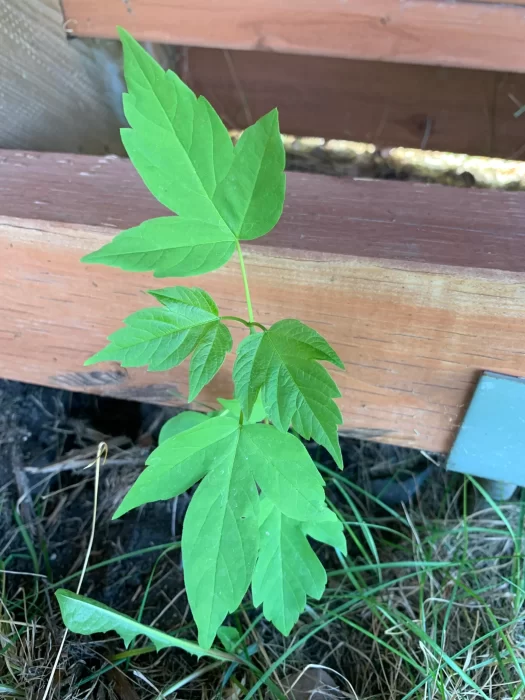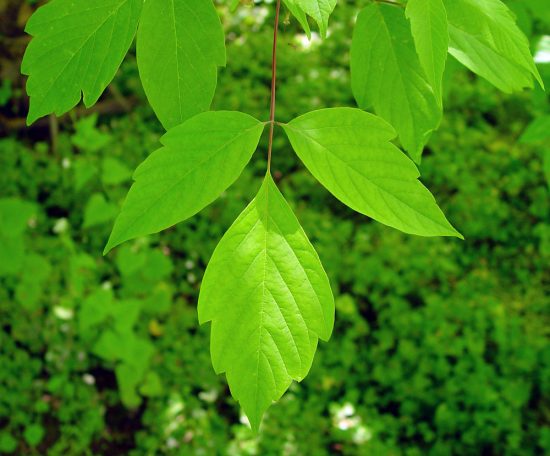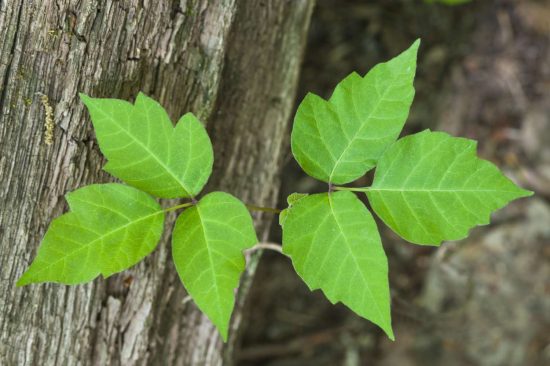Box Elder vs. Poison Ivy: Are you also confused between these two? Don’t worry! We are here to clear all the doubts!
These two plants, often mistaken for each other, play vastly different roles in our gardens and natural landscapes. As we delve into Box Elder vs. Poison Ivy debate, we’ll uncover the key differences that set them apart, from their distinct leaf patterns to their unique growth habits.
Check out Traveler Palm vs. Bird of Paradise differences here
Box Elder – An Overview
Box Elder, scientifically known as Acer negundo, is a deciduous tree that belongs to the Sapindaceae family.
- Leaf Structure: Box Elder leaves typically comprise three to seven leaflets. Each leaflet is serrated along the edges and has a green color, turning into vibrant shades of yellow in the fall.
- Bark: The bark of the Box Elder tree is light gray and possesses distinctive ridges.
- Seeds: Box Elder produces clusters of winged seeds referred to as “samaras” and are similar in appearance to those of maple trees.
- Size: The Box Elder tree can grow from 30 to 60 feet.
Magnolia vs. Tulip Tree: All the Differences
Poison Ivy – An Overview
Poison Ivy, or Toxicodendron radicans, is a well-known plant in North America notorious for causing skin irritation upon contact.
- Leaves of Three, Let It Be: One of the most common sayings associated with Poison Ivy is “Leaves of three, let it be.” The plant typically has three leaflets on each stem, arranged alternately.
- Toxicity: The toxicity of Poison Ivy is attributed to an oily resin called urushiol, which is present in its leaves, stems, and roots. Urushiol can cause a painful, itchy rash when it comes into contact with the skin.
- Habitat: Poison Ivy is adaptable and can be found in various environments, from forests to fields and even urban areas. It often grows as a vine but can also take on a shrub-like form.
Does Poison Ivy Have Flowers
Box Elder vs. Poison Ivy

1. Growth Habit and Structure
- Box Elder: Box Elder is a deciduous tree that reaches impressive heights, often standing between 30 to 60 feet tall. Its growth habit is that of a tree with a solid trunk, branching out into a canopy of leaves.
- Poison Ivy: Poison Ivy, in stark contrast, is not a tree but rather a woody vine or shrub. It typically remains close to the ground, with its stems or vines crawling along the forest floor or climbing up trees and structures. it can trail upto 5-8 feet in the right growing conditions.
2. Bark and Stem Characteristics
- Box Elder: The bark of Box Elder trees is typically light gray and features distinctive ridges. The stems are woody and form a robust central trunk.
- Poison Ivy: Poison Ivy vines and stems are often covered in fine, hair-like structures. The bark on mature Poison Ivy plants can be somewhat woody but lacks the pronounced ridges found on Box Elder trees.
3. Leaf Characteristics
- Box Elder: The leaves of Box Elder typically feature three to seven serrated leaflets. These leaflets are green during the growing season but transition into vibrant shades of yellow in the fall.
- Poison Ivy: Poison Ivy leaves are composed of three leaflets arranged alternately along the stem. As autumn arrives, the green leaves turn into red or orange.
Traveler Palm vs. Bird of Paradise: All the Differences
4. Fruit and Seed Structures
- Box Elder: Box Elder produces clusters of winged seeds called “samaras,” similar in appearance to those of maple trees. These seeds are often found hanging in clusters on the tree.
- Poison Ivy: Poison Ivy produces small, whitish berries that are attractive to birds. These berries are a key method of seed dispersal for the plant.
5. Toxicity and Skin Irritation
- Box Elder: Box Elder is entirely non-toxic and poses no threat to human health upon contact. Interacting with Box Elder leaves or bark will not lead to skin irritation.
- Poison Ivy: It contains a resin called urushiol, which can cause a painful, itchy rash when it comes into contact with the skin.
6. Cultural Significance
- Box Elder: In some indigenous cultures, Box Elder is popular in crafting tools and making baskets. It does not have any negative cultural connotations.
- Poison Ivy: Poison Ivy has a negative cultural reputation due to its toxic nature. Folklore often emphasizes identifying and avoiding this plant to prevent skin irritation.
Box Elder vs. Poison Ivy- FAQs
Q1. Can Box Elder cause skin irritation like Poison Ivy?
A: No, Box Elder does not possess the toxic properties that Poison Ivy does. Contact with Box Elder leaves or bark is generally safe and does not lead to skin irritation.
Salvia vs. Veronica: All the Differences!
Q2. Is Poison Ivy common only in North America, or can you also find it in other regions?
A: Poison Ivy is primarily native to North America and is most common in this region. However, some species of Toxicodendron have counterparts in other parts of the world.



